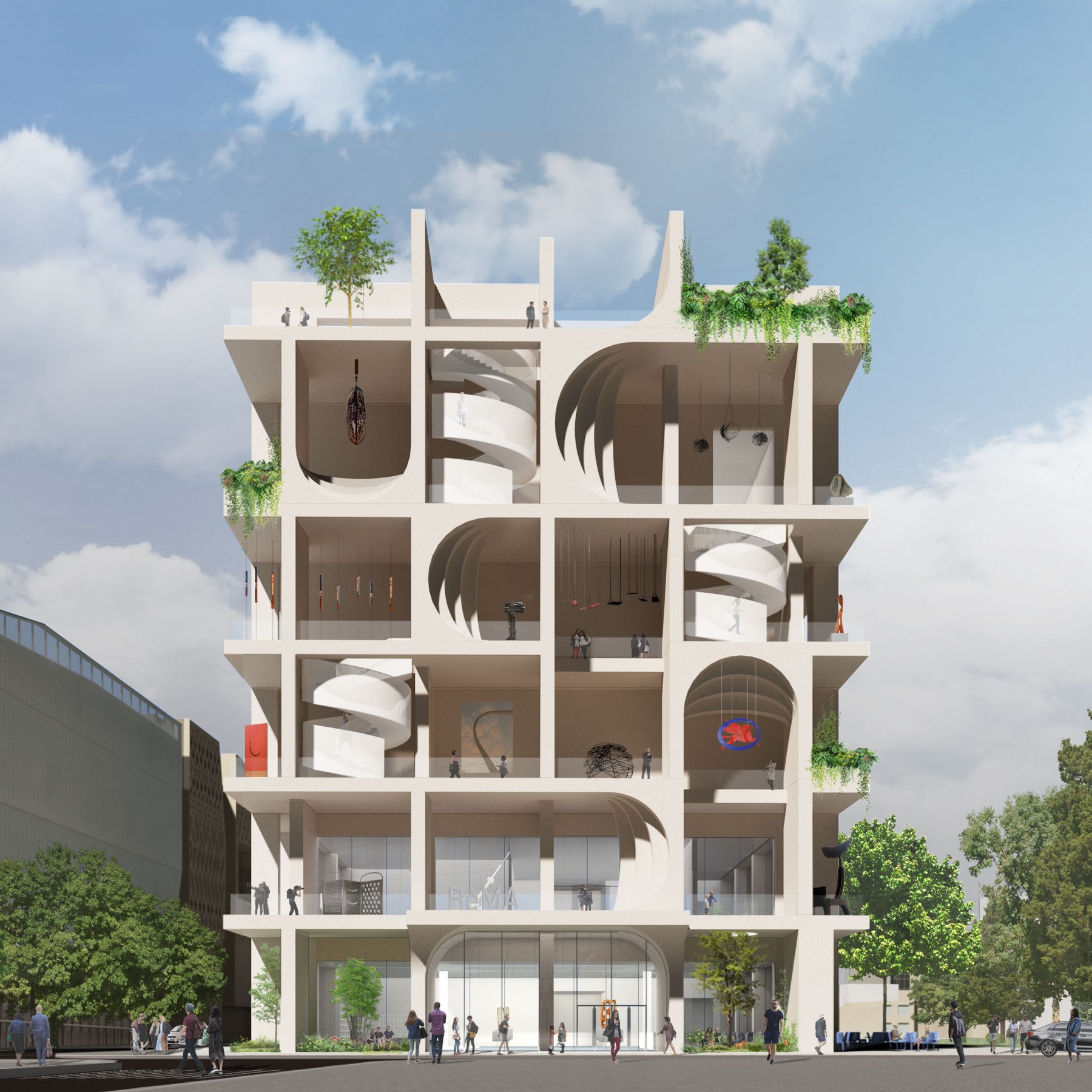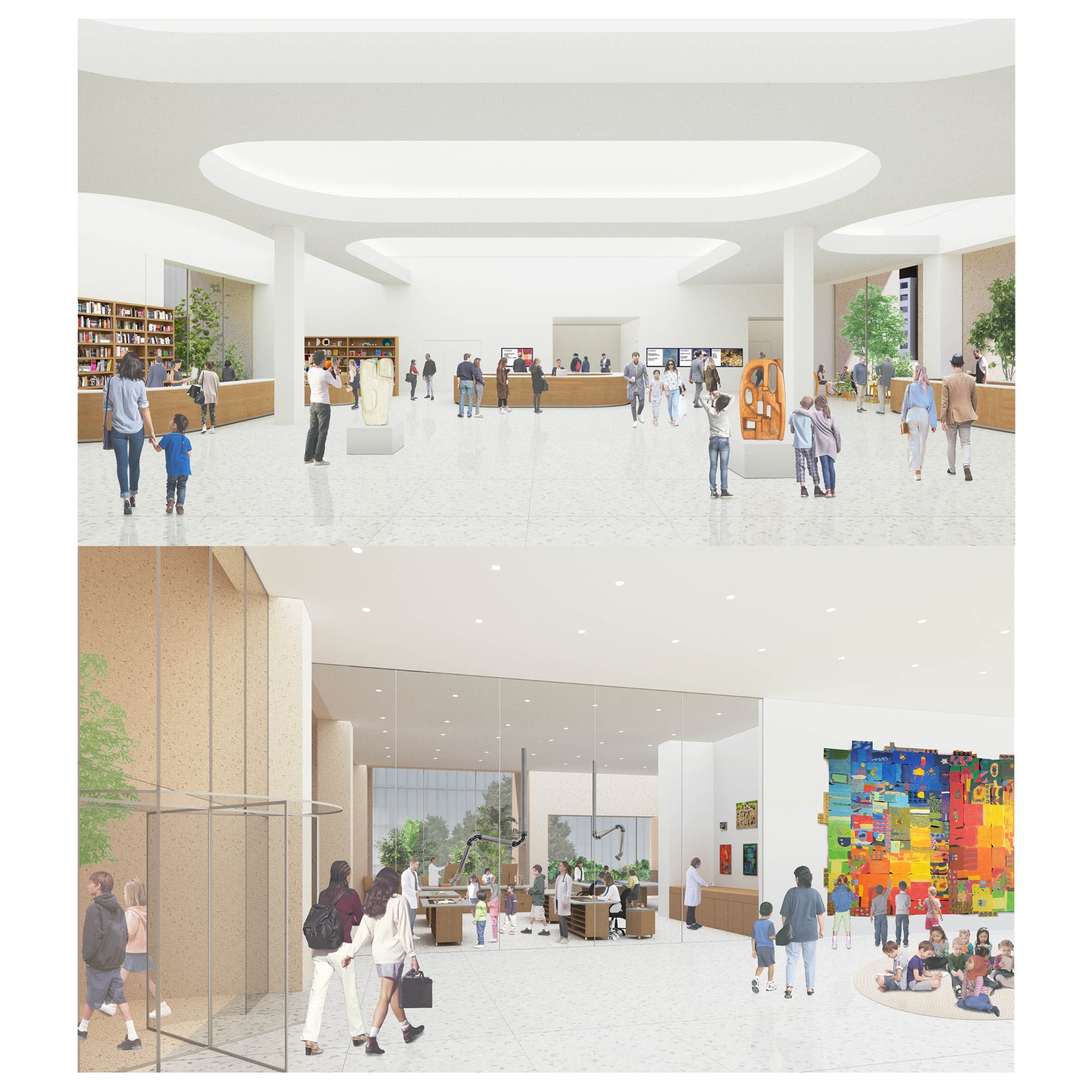The Landmark
A dedicated home to bridge the gaps in its cultural eco-system:
BeMA has integrated into the museum dedicated galleries according to its programs and the gaps it intends to fill in the arts ecosystem. While partnering and utilizing institutions around it in order not to duplicate spaces, the museum seeks to create a multipurpose building that can handle a range of exhibitions, programs and events.
Large storage facilities, designed by specialists, will be used to house and preserve, current and future art and archives collections.
A space dedicated to comics will be highlighted in the floor above, showcasing an important yet often underrated part of Lebanese artistic tradition.
Another space dedicated to emerging artists will be host to ever- changing programs and exhibitions, flexible depending on the nature of the ideas and works.
While the museum will utilize USJ’s five auditoriums, there will be a polyvalent space for smaller performances, workshops, installations and lectures. Lastly, a flexible space will be used as artist studios, workshops and learning rooms.
A MUSEUM FOR ALL
- A public cultural space
- that’s open to the community
- A home for the national collection to nurture and share identity
- An engaging exhibition and performance space
- A centralized space for archiving digitizing and research
- A lab to restore and preserve works of art
- A hub for creative and arts-related professions
- An academic museum with university programs to support learning & professions
- An equipped space for artists to create and teach
Architecture
Conceived as an open museum, Amale Andraos’ design, is a hybrid of Modernist balconies and Beirut’s vintage Art Deco verandas.
The architect has focused on exactly what a museum should express in the 21st century:
"A museum as a community, not a temple." Kim Benzel, Curator at the Met about BeMA

 Workac
Workac
GREEN PHILOSOPHY
The architecture presents efficient solutions to Beirut's urban, cultural and ENVIRONMENTAL NEEDS
Designed Around the Three Central Pillars of its Mission
Safeguard:
BEMA will house and preserve a Classical, Modern, and Contemporary collection of Lebanese heritage in an open, green building complemented by a virtual platform.
Create:
BEMA will foster opportunities for artistic production and dissemination by collaborating with creatives in Lebanon, the region and globally.
Engage:
BEMA will give access to communities by offering cultural and learning programs, in the service of a free-thinking civil society.


SITE
Within yards of the National Museum, BeMA will be situated in the heart of a vibrant cultural, commercial and education hotspot on the campus of Saint Joseph Univeristy (USJ), along what is known as the Museum Mile.
Building Timeline
2016
Architectural Competition launch & Jurors Chaired by Lord Peter Palumbo. George Arbid, Dr. Farés el-Dahdah, Rodolphe el-Khoury, Lamia Joreige, Rem Koolhaas, Hans Ulrich Obrist, Dame Julia Peyton-Jones & Lord Richard Rogers. Honorary Member Dame Zaha Hadid
2018
Lebanese-born architect Amale Andraos and WORKac appointed to design BeMA's future building
2022
Against all odds, BeMA lays the first stone on site
2024
Permit received for excavation
2029
With your contribution, the promise of BeMA will be completed

 © Workac
© Workac
The Architect
AMALE ANDRAOS, WORKAC
Amale Andraos, former dean of the Columbia University Graduate School of Architecture, current special adviser to the President of the University and co-founder of New York City architecture firm WORK Architecture Company (WORKac), describes her design of the planned building as an act of willful optimism to help the Lebanese imagine a joyful future. Amale Andraos explains that the building was conceived to be accessible to all with the art it showcases and the vital cultural interactions it can generate around it.
“The building’s architecture is in conversation with the city’s past urban histories and its present vibrancy.” Amale Andraos
